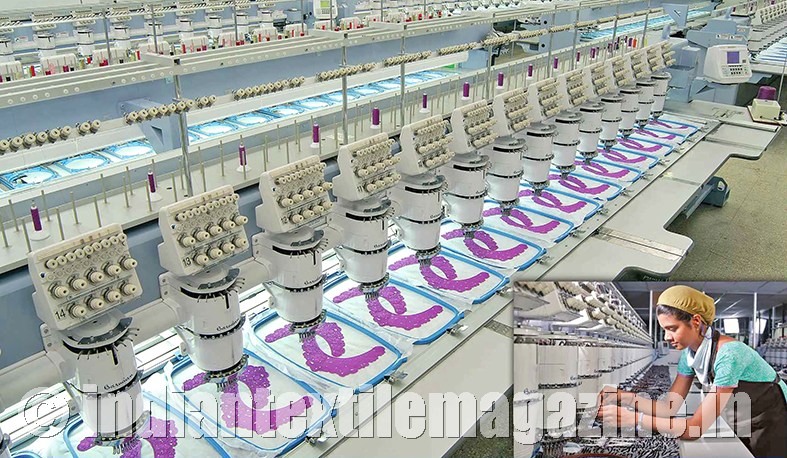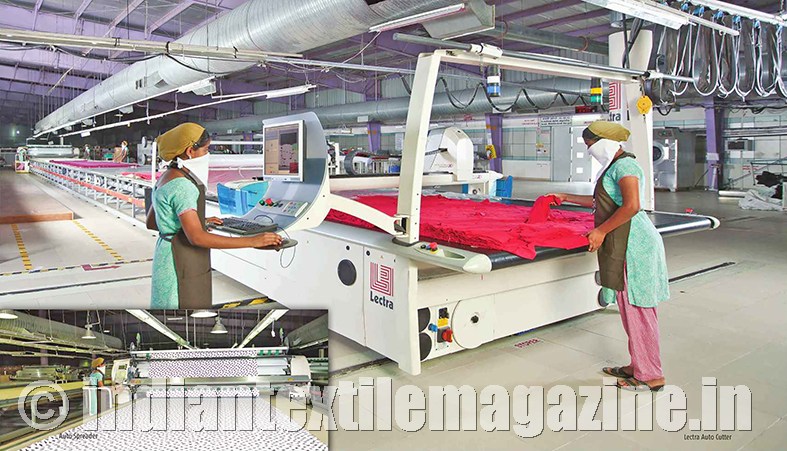KPR Mill Ltd., is one of the largest vertically integrated apparel manufacturing companies in India, with a cumulative capacity of 3,53,616 spindles to produce 90,000 MT of yarn per annum, a knitting facility to produce 27,000 MT of fabrics per annum and the garmenting facility to produce 95 million pieces of ready-made knitted apparel per annum. Its ETP-embedded fabric processing unit with a capacity of 18,000 MT per annum is equipped with advanced cold processing technology. The company has invested in a state-of-the-art Printing Division with a capacity of 7500 MT per annum, and 66 wind mills with total power generation capacity of 61.92 MW. KPR has also a co-gen-cum sugar plant with a capacity of 30 MW and 5,000 TCD in its wholly owned subsidiary company.

The vibrant team of KPR Brothers hailing from an agriculture family of a remote village evolved their tiny business into a marvel entity through their strenuous and enduring team effort transforming the lives of rural folks. Begun in 1971, just with four powerlooms and four employees at their father’s barn with a slender capital, it is now one of the leading textile conglomerates in India built on fabulous values.
KPR’s strong fundamentals entailed establishment of 12 state-of-the-art manufacturing facilities employing around 19,000 educated workers. Its quest for quality, excellence, transparency and good governance helped KPR emerge as one of the top 500 companies in India and its management as one of the top 100 CEOs of India for consecutive years. Its indulgence in green energy initiatives, eco-friendly activities and human values upgradation in pursuit of the social cause are noteworthy.
At the globally level, India has the second-largest integrated textile manufacturing facility. In the last fiscal, India’s readymade garment clothing exports rose 2.31% to $17.35 billion, in which almost 80% are cotton based. Realising that a push in apparel exports can be an engine of growth for the other segments, the Government is keen on incentivising the garment sector.
However, the infrastructural challenges and the preferential tariffs that the neighboring countries enjoy with the EU markets need to be addressed for Indian textile and clothing exports to take a leap forward. To leverage on the strengths in the spinning and garment segments, stabilisation of the processing and allied segments, has become essential. The strategic expansion implemented in low capital internship garment and processing segments, self-sufficiency in power, focus on value-added products and comfortable cash flow are some of the major factors placing KPR in an advantageous position to reap the benefits from the bright prospects ahead.
Expansion
KPR has been augmenting its capacities in the value-added segment. It has commissioned its large greenfield garment manufacturing facility with a capacity to produce 36 million garments per annum under one roof. Now, with a total capacity of 95 million garments, KPR is one of the largest garment manufacturers in India. The company has been adding new clients and entering the unexplored markets.
KPR has also commenced operations in its state-of-the-art Processing Unit II. The advanced technology of cold processing adopted therein reduces water consumption by 30% and eliminates usage of salt completely. This eco-friendly facility will ensure reduced cost of production and enhance the fabric quality with excellent colour uniformity. It will further add value to the Garment Division.
KPR has recently established a new Printing Division with a highly sophisticated technology printing machine imported from Austria. This advanced technology empowers the company to print sharp designs with a high level of accuracy. The entire range of fabrics such as light & heavy as well as delicate & sensitive fabrics can be printed in the same machine without any friction. Its ability to print voluminous fabrics with high resolution is a salient feature. The sharpness & accuracy in printing the design and colour are its significant strengths. The new division would cater to the Premium Brands’ high-end garment requirements carrying higher revenue and margin.
Future ahead
Asia has already emerged as the largest global manufacturer – supplier hub for textile and apparel products. India stands a chance to gain a prominent market share because of the growing demand from both domestic and export markets, recognition of Indian goods at the global level, reduced cost of production, favourable Government policies and its strong raw material base.
According to a Boston Consulting Group (BCG) report, India is poised to be the third largest consumer market in the world in terms of its purchasing power as its consumption may treble to a level of $4 trillion by 2025, owing to the shift in consumer behavior and the expenditure pattern. For the Indian textile industry, which is growing comparatively faster in the world, these are specifically interesting times. The factors that influence the Indian Industry growth are stability of the rupee against the dollar, firm prices of inputs like cotton and electricity and the encouraging global economic outlook.
With GST in place, it will create a level playing ground for everyone. Particular for companies like KPR with integrated and state-of-the-art facilities backed with strong fundamentals, the outlook appears to be bright and promising indeed.

